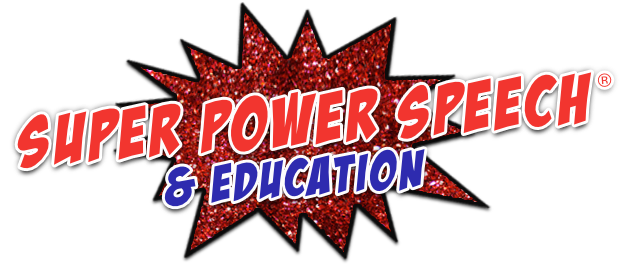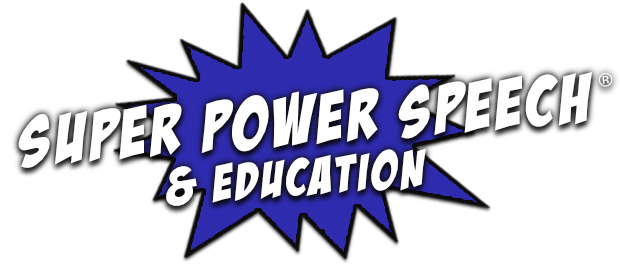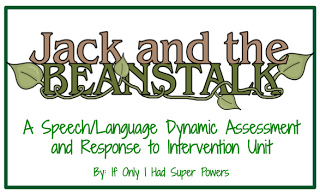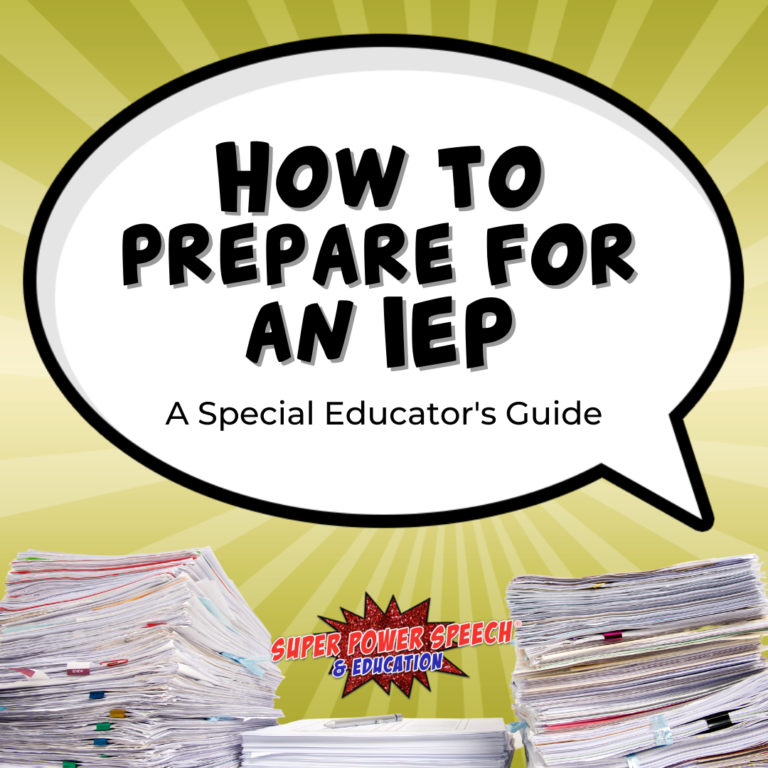Literacy Interventions in Speech Therapy
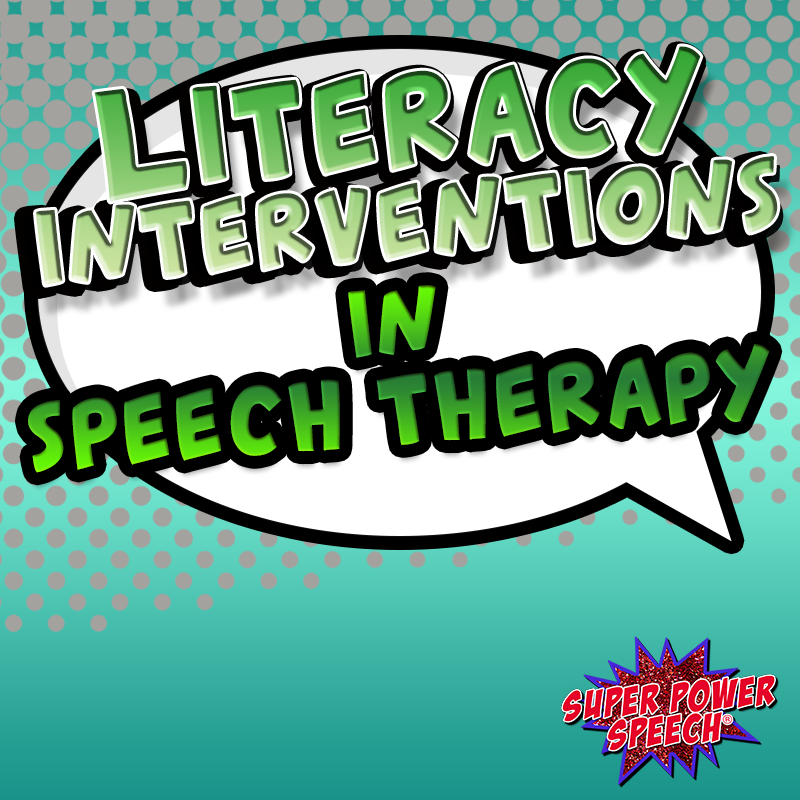
Speech pathologists have an important role to play in literacy instruciton. Unfortunately, my graduate program never taught me what that role was or what to do about it. So…I have spent at least a decade scoffing at presenters who tell me that I need to take on yet ANOTHER responsibility. Isn’t the SLP’s scope of practice large enough without adding reading onto the plate?
Slowly (and embarrassingly, reluctantly) have I come to embrace ASHA’s position that SLPs play a “critical and direct role in the development of literacy” (ASHA, 2001). However, in my 2×30 minute weekly sessions, I have neither the time nor energy to lead a direct reading instruction intervention. But I’ve wondered what I can do to promote literacy skills while staying true to my role as a communication specialist (rather than reading tutor).
This year, the class across the hall from my speech room was selected to be part of a special literacy cohort for children with multiple disabilities. Dr. Caroline Musselwhite is an incredible instructor and wealth of knowledge and I highly encourage you to check out her resources and conferences. In one training she referred to the article “Comprehensive Literacy Instruction, Interprofessional Collaborative Practice, and Students with Severe Disability” (Erickson, 2017), which describes how interprofessional collaborative practice is essential for teaching literacy skills in children with severe disabilities.
Comprehensive literacy instruction
Erickson (2017) states that literacy instruction must be comprehensive. This may include the special education teacher providing direct instruction, the SLP providing communication boards for individuals needing AAC, and the OT providing adaptive methods to turn pages or access AT. Elements of comprehensive literacy instruction include shared reading, independent reading, shared writing, independent writing, alphabet knowledge, and phonological awareness. In the remainder of this blog post, I will look more closely at four of these areas and how they can be used in speech.
Shared reading is an evidence-based practice for increasing language skills, enjoyment of text, social relationships, and text-to-life relationships. Shared reading includes reading books aloud, while commenting, asking questions, responding, and allowing for meaningful interaction within the reading. I use shared reading daily with my complex communicators in whole group circle time instruction. In addition, most of my monthly lesson plans include the use of literature for several sessions of speech therapy for language, social skills, or articulation.
Shared writing is part of
For example, the teacher recently focused on garden words with the sentence starter, “I like…..” The students pointed to the plant that they like and she wrote it down and re-read all of the answers. After repeating the activity for a week, she typed up the answers and created a mini-book to read together or within independent reading times. I love this shared writing and sentence frames because it is an activity I often do within speech therapy sessions, without ever realizing that I was promoting literacy skills! I have students verbally or with AAC finish sentences and then read them back to me to increase vocabulary, grammar, and describing. I also use this technique when working on sequencing skills, such as “First I…”
Comprehensive literacy intervention also includes alphabet knowledge. As a part of circle time
In the past, I have provided phonological awareness activities primarily to my students working on articulation sounds. However, Erickson (2017), states that all educational team members can teach phonological awareness skills through books, rhymes, poetry, rap, alliteration, and music. In 1970, Wylie & Durrell published the 37 most common rimes (word endings) in written primary grades. Learning these rimes not only teaches decoding skills but also spelling patterns (Erickson, 2017). It enables students to create rhymes and therefore rhyme-based poetry and rap. When I saw these words, I realized that SLPs, as well as teachers, can use rimes throughout instruction.
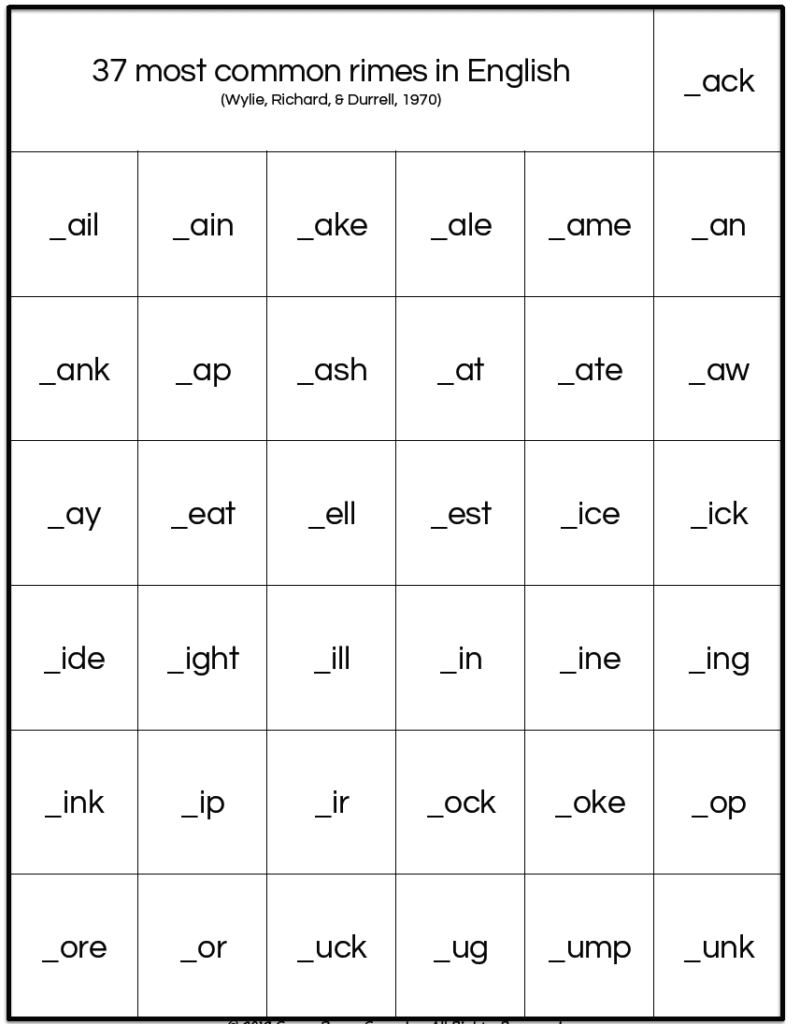
Using rimes for phonemic awareness:
- Teach students how to read one or more of the rimes (word endings).
- Using the speech sounds alphabet, name as many rhymes (real or nonsense) as possible.
- Sort real and nonsense words – define if necessary.
- Write short poems or raps using the rhymes.
Using rimes for articulation practice:
- Identify the targeted articulation consonant sound.
- Write the sound at the beginning of each
rime . - Practice using correct speech sounds while stating the 37 words.
- Sort real and nonsense words based on the targeted articulation sound.
Collaboration
Although literacy instruction has traditionally been believed to be in the realm of only the teacher, Erickson (2017) argues that comprehensive instruction requires that all educational team members collaborate. With collaboration, all areas of instruction including shared reading and writing, alphabet, and phonological awareness can be addressed daily with students while emphasizing both print and language skills. Take some time to discuss these ideas with your special education teacher(s) and determine ways to work together towards literacy instruction for shared students.
Incorporating literacy instruction in speech therapy
I would recommend that you consider these four areas of comprehensive literacy instruction and determine ways to incorporate them into your speech therapy practices. Below are several examples of ways to build literacy while working on speech and language goals.
Shared reading:
- Focus on comprehension based on sequencing
- Have students predict what will happen next
- Work on sequencing beginning, middle, end of the story
- Ask an open-ended question that relates the text to the students’ life experiences
- Determine synonyms for words used within the text
- Describe pictures or characters from the text
Shared writing:
- Create sentence starters and have children read them
- Write down words contributed by students when describing or finishing a sentence
- Read the sentences back to the students
- Have students read the sentences to the group
Alphabet knowledge:
- Refer to alphabet displays throughout therapy
- Ask students to determine the beginning letter of a word
- Develop stories based on a chosen letter
- Refer to the alphabet frequently during articulation therapy
Phonological awareness:
- Sound out unknown articulation words or words from books
- Use rime endings to practice articulation
- Create rhymes
- Determine and write two-line rhyming poems or wraps
- Use alliteration to create silly sentences or stories
- Use phonological skills to encourage writing unknown words
References:
American Speech-Language-Hearing Association. (2001). Roles and responsibilities of speech-language pathologists with respect to reading and writing in children and adolescents [Position Statement]. Available from www.asha.org/policy.
Erickson, K. A. (2017). Comprehensive literacy instruction, interprofessional collaborative practice, and students with severe disabilities. American Journal of Speech-L
Wylie, R. E., & Durrell, D. D. (1970). Teaching vowels through phonograms. Elementary English, 47(6), 787-791.
